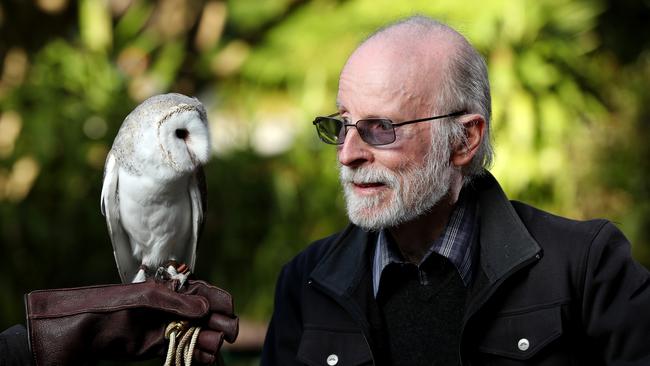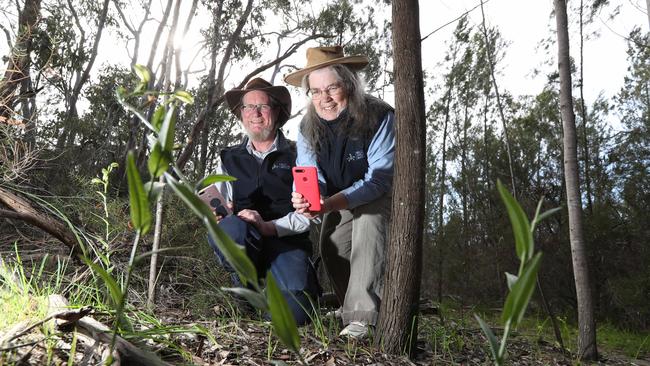2020 Unsung Heroes of SA Science: Graham Medlin, SA Museum and citizen scientists Robert and Rosalie Lawrence for Wild Orchid Watch
The state’s scientific community has hailed the efforts of three of their most selfless members: A dogged detective who searched for tiny bones in owl pellets; and a pair of orchid enthusiasts who attracted a crowd of citizen scientists.

SA News
Don't miss out on the headlines from SA News. Followed categories will be added to My News.
- Owls leave a calling card clue to the local fauna on their diet
- Citizen science project Wild Orchid Watch uses people power
Devoted scientists and conservationists who work tirelessly behind the scenes are in the spotlight today as the 2020 Unsung Heroes of South Australian Science.
Former science teacher turned honorary researcher at the SA Museum, Graham Medlin, is a dogged detective searching for clues to animal diet and distribution from the things they leave behind, even droppings.
In nominating Mr Medlin for the award, University of Adelaide researcher Dr Liz Reed described a man who is meticulous and dogged, yet also generous, patient and humble at the same time: “These qualities have earned him high respect and admiration in the scientific and broader community.”
For more than 25 years Mr Medlin has volunteered two days a week at the museum, advising both students and researchers and supervising a dedicated team of volunteers.
He has amassed a large and valuable collection of “vertebrate surface remains” known as “subfossils”.
Dr Reed said scientists from 19 research institutions have published papers using data from the collection.
“The extensive Subfossil Collection he has assembled at the SA Museum will be his lasting legacy to Australian natural history, environmental reconstruction and palaeoecology research,” she said.
“Given rapid advances in fields such as ancient DNA, morphological shape analysis technologies and conservation palaeobiology, the full significance of Graham’s contribution to science is yet to be fully realised. His legacy will continue to inspire and inform science long into the future.”
SA Museum director Brian Oldman said the collection included specimens from areas across SA and interstate, notably the Flinders Ranges, Nullarbor Plain and other arid regions.
“Thanks to Mr Medlin’s meticulous nature, several extinct species have been discovered, including the pig-footed bandicoot (Chaeropus yirratji) and a hopping mouse (Notomys robustus) which is known only from subfossil skulls in the Museum’s collection,” he said.
“He has also made major contributions to the understanding of existing species using subfossil records, allowing us to help conserve threatened wildlife.”

Husband and wife team, Dr Robert and Rosalie Lawrence of Heritage Bushcare won the Unsung Hero of SA Science Communication Award.
In 2011 they published Start with the Leaves, a guide to the orchids and lilies of the Adelaide Hills, and South Australia’s Native Orchids, a publication on DVD.
Then Mrs Rosalie discovered the “Go Botany” website of the US National Science Foundation and began a quest to create an Australian orchid identification website.
The Wild Orchid Watch app launched this year at the University of Adelaide, with Inspiring Australia Science Engagement Program funds.
People everywhere take photos and log data that is then available for research, policy and planning purposes.
“It’s not like we’ve done something brilliant,” Dr Lawrence said.
“All we’ve done is we’ve put together what most people who are interested in orchids want to happen anyway, which is a systematic or easy way for people to collect data and get it all in one place.”
Minister for Innovation and Skills David Pisoni last night congratulated all of the winners and finalists in the Unsung Hero and SA Young Tall Poppy Awards “who are making a difference in our community and inspiring future pioneers in STEM”.
The Unsung Hero Awards of South Australian Science are a joint initiative of National Science Week SA and the Australian Science Communicators SA (ASCSA), and are administered by National Science Week SA.

